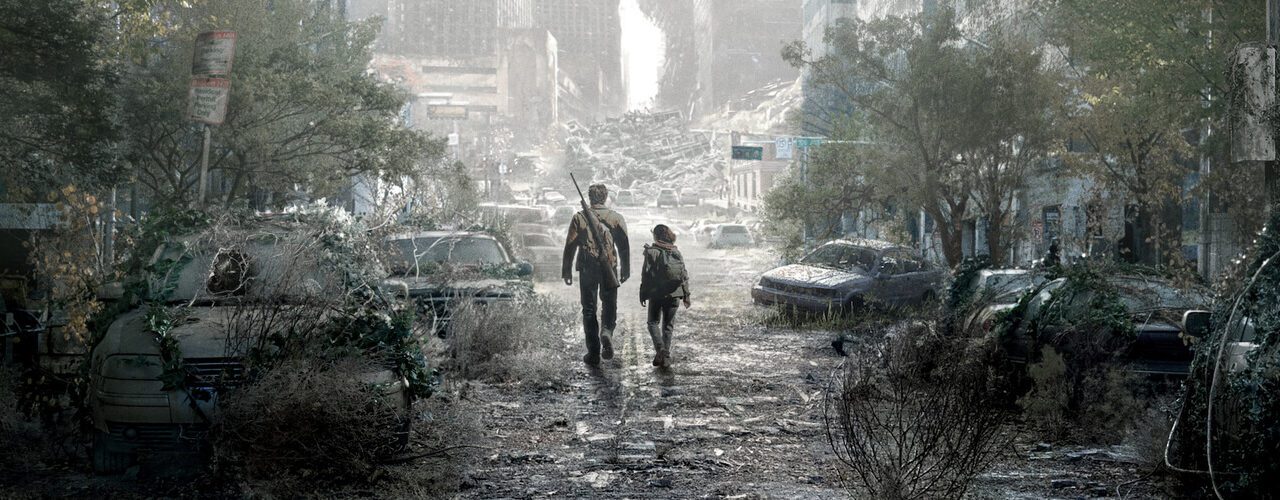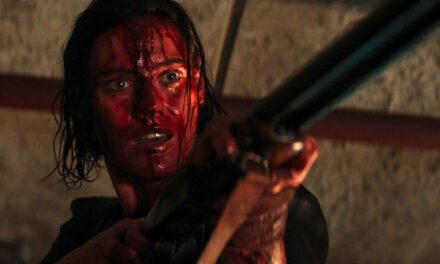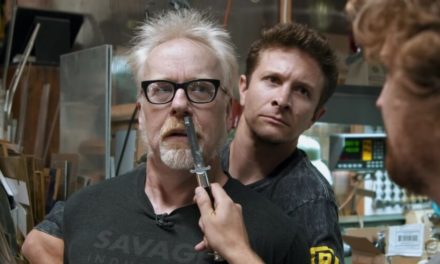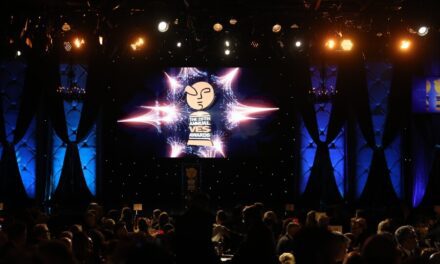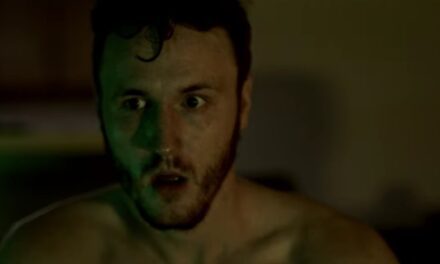SPOILER: Literally every blurb in this article contains a spoiler. If you haven’t watched The Last of Us and enjoy punishing yourself with an internet nine-tails, well…keep reading.
Let’s call it junkyard chic. Or flourishing abandonment. Desolation so attractive that you want to sell all your belongings and go live in some ruins with the infected. A cordyceps monk.
Creators Neil Druckmann and Craig Mazin – and Weta, ILM, Crafty Apes, and the other dozen or so VFX studios that contributed – what they emulated from video game into live-action was a world so striking that you could market the vine-covered streets of Boston on Airbnb and sell pockets of rubble at $300 a night.
Each episode could make a person want to lie down in sunlit rubble moss and fall asleep for 300 years, and here we reflect on the fine moments of the first five.
Episode One: The art of effective chaos, the lighting that set the tone
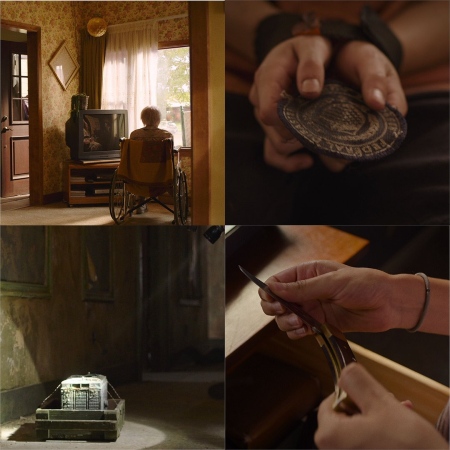
Photo credit: HBO Max Twitter
There’s an entire thread about the lighting of the first episode that is basically 200 comments of gushing praise. The scenes where life is normal in 2003 – they’re starkly amber-hued and bright – you see Sarah and Joel eating pancake breakfast together. Episode Two, again – the initial brightly sunlit shot of Jakarta, Indonesia before Outbreak Day. Ksenia Sereda was the cinematographer for Episodes One and Two, and Eben Bolter shot Three, Four, Five, and Six. Slashfilm interviewed Cinematographer Eben Bolter last week and he described the technical prowess required to light a night set in Calgary’s 60-100 mph winds.
The lighting sets up the contrast for the darkness to come. Later that first night in 2003, the infection is ON, and it’s time for some VFX chaos magic. Firelight illuminates the streets as Joel, Sarah, and Tommy power out of the city. People scream and stagger about. Cars crash. And then the stunning oncoming terror of a 747 jet leaning in out of the sky and heading directly towards their street. A December 2022 Collider article detailed where Craig Mazin commented on the importance of the effects:
“Neil and I always knew to ask, ‘Why are we only doing what’s in the game? What can we do to expand?’”
This plane wasn’t in the original game but was added in as an important CG sequence to effectively relay the sense of catastrophe. Later in the episode, Joel and Tess escape from the QZ, and the lighting is now hauntingly dark and drippy, with only the filtered light of helicopter spotlights as they crawl through a drainpipe.
This is the environment of the dirt, the gutter, sneaking through the city – they are now rats, and their environment needed to reflect that. The VFX in Episode One presented a masterclass in extremes: sewing bombastic chaos with the outbreak, and then the environmental effects and set extension work that helped achieve the dark bleakness of post-infection.
Episode Two: The panorama of abandonment
What remains. #TLOU pic.twitter.com/W3CUkrfXab
— HBO (@HBO) January 23, 2023
That’s a fancy way of saying – damn, they make vine-covered rubble look good.
At the VES Awards last week, The Last of Us Part I video game won “Outstanding Visual Effects in a Real-time Project”. Well, the show should’ve been nominated, too. There’s a moment when Tess and Joel and Ellie step out into the open Boston city and it’s just breathtaking. Towering buildings are torqued at leaning angles, covered in wild growth, and a flock of birds soars up and adds to the atmospheric abandonment. Of course, the set design of the show is phenomenal – so much of this built-out jungle rubble world is practical, and then the touches of CG give it the added depth to feel entirely immersive with no separation between CG and practical.
The other establishing element of Episode Two – for those who haven’t played the game – is how the worldbuilding execution makes this outbreak so viscerally gross. When the Indonesian disease expert cuts open the infected specimen’s skin, a chalky white cake substance creams out of it. Yes, I said “creams out”. When an infected draws close to Tess and you see the effect of the fungi twirling into her mouth – it’s like swirling sea anemones reaching out their tendrils.
Where Episode One was chaos and survival, Episode Two is body horror and the beautiful expansiveness of a world that is no longer controlled by humans.
Episode Three: When VFX needs delicacy instead of a vice grip
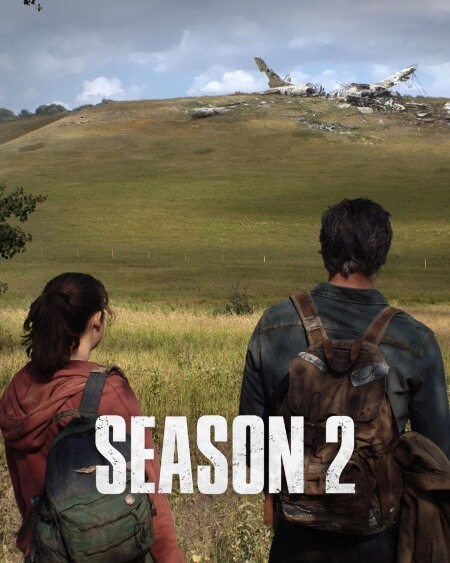
The Last of Us depicts the artfully crumbling jet as it announces Season 2
All of the publications that said Episode Three was a love story for the ages – well, they’re right. Because of this intimate and deeply fleshed-out story of Bill and Frank’s relationship, the episode doesn’t carry the same expansiveness as Episode Two. Episode Three is driven by close-ups of Bill and Frank and the two of them in small, intimate spaces – at the kitchen table, sharing a strawberry in the yard. The bombastic effects sequences – other than setting some raiders on fire with homemade flamethrowers – they’re not necessary for this character study.
This is the episode of a delicate touch. It’s the little moments that keep the effects relevant and remind the viewer that they are still immersed in a delicately developed world. For example, Joel and Ellie are traveling along a back road and they stop to absorb the sight of an old 747 jet embedded in the hillside. It is scattered and crumbled – it’s like a post-apocalyptic Stonehenge. The pieces are artfully disjointed. Again, when they’re walking through a forested back road, the ground is littered with practical clumped leaves but accented with the mystique of a downed telephone pole wrapped in vines.
Episode Three required a finessed touch to background Bill and Frank’s story and delivered accents of scenery that were perfectly blended.
Episode Four: “Hey team, time to make a hell of a lot of things look overgrown”
For #TLOU 104 I’m highlighting the amount of in-camera work the art dept did, building a gas station and 100 or so fully aged and weathered vehicles:
— Eben Bolter BSC (@ebenbolter) February 6, 2023
(1) Scout photo
(2) Mid-way through build (snow!)
(3) In-camera as shot (no tweaks)
(4) Post VFX and DI final shot (added depth) pic.twitter.com/oUzLUQm5CE
A VFX Supervisor stands atop a chariot on the growth-covered set of The Last of Us, whipping, a wild-eyed horse driving along crazily as the supervisor shouts:
“More detritus! More detritus!”
That’s what Episode Four feels like. It is a scenic cross-country road trip where setting detail is paramount. So much of it succeeds in the set pieces that are already built to look like a landscape designer’s meadow garden wet dream. But you see these shots – like a moss-covered highway where the moss has been tufted up into raised moss mounds, showing how long it’s been growing there – it’s excruciating attention to small detail. Again, when Joel and Ellie walk the back roads, the litter must be drifted and clumped up in thick swathes. This is not fresh “the apocalypse happened yesterday” litter. The effects in these moments needed to ensure that the audience lives in an accurate timeline of this world.
Episode Five: “They have a cave troll”
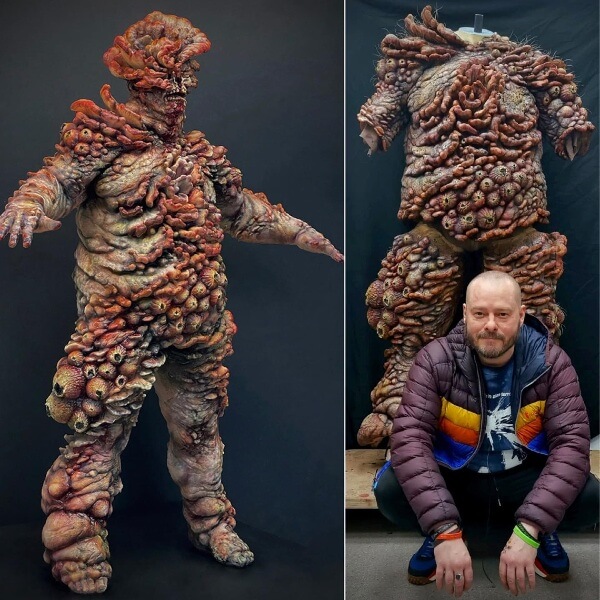
Photo Credit: The Last of Us Twitter
Tell me that’s not just a cave troll in disguise. Alright, so it’s not a cave troll – it’s a bloater. The bloater is a monster that has fungi so tough it’s like armor, it glows in the dark, and it’s completely okay with running up and pulling a guy’s head off. They also throw sacks of gaseous mycotoxin and they like to pull human jaws apart until the head splits open (it remains to be seen how playfully gory The Last of Us will get in upcoming episodes with this). The prosthetic special effect costume capable of realizing such a creature was an 88-pound wet suit occupied by 6’6” stuntman Adam Basil.
Variety reported that four-time Emmy-winning prosthetics designer Barrie Gower created the practical suit specifically for Adam Basil by creating a cast of his body with molding clay. The actual monster suit was made of foam latex and foam styrofoam, which speaks to how much must have been used to make the suit weigh 80+ pounds. The chaotic scene where clickers rampage through the Resistance – according to the same interview – required 65 prosthetic artists five hours to complete makeup on the clicker stunt performers and extras for the scene.
The little girl clicker with the bad back who slashes Kathleen to pieces? Almost entirely prosthetics. This was nine-year-old gymnast/contortionist Skye Cowton.
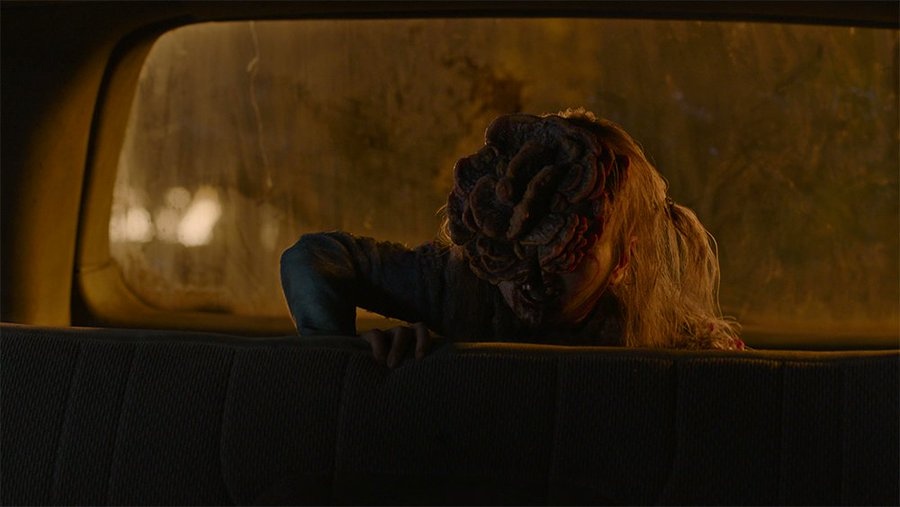
Photo credit: The Last of Us
Practical and CG effects have achieved the same outcome: ‘The Last of Us’ worldbuilding is entirely captivating
I think of Episode Two when Joel and Tess and Ellie walk through a flooded building corridor in Boston, and a frog sits atop a floating piano. With a floating corpse and nearby flesh-eating cordyceps – I still want to exist in this place.
Through the first five episodes of the first season, there are already so many scenes that you could just rest for a moment and take in the view. If we wake up tomorrow in a desolate apocalypse, this is the world of terror I want to live in.
Remembering #TheLastOfUs has a new episode tonight pic.twitter.com/r46tF3Lb3e
— Entertainment Weekly (@EW) February 5, 2023

